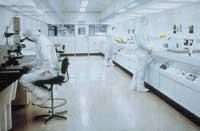Profession and risk of hematological diseases

There are statistics on the incidence of these diseases, but we do not know if they are very reliable. In the published studies, the suspicion of greater chemical contact has always been mentioned in the work of patients with leukemias, myelodysplasias, lymphomas and similar malignant blood diseases, but in general, cases related to work have not been distributed well. For this reason, the Health Authorities published special pages indicating the hematological diseases they suspected had appeared due to chemical or physical contact. A questionnaire and a letter prepared to send the responses to inform a coordinator of the suspected diseases mentioned were distributed to all hematologists.
Within 36 months of the investigation, 229 cases, 201 men and 29 women were collected. As for age, in 26 cases it has been over 72 years and 4 patients under 22 years of age. Although most cases were diagnosed starting in 1989, some were diagnosed in 10 previous years. Although in 30 patients there was a contact of less than a year, most of them did so for decades.

In the table above, the hematological diseases diagnosed and the number of them are shown. It is difficult to give a classification of the different industries and professions, but the most frequent were the chemical industry (30 cases), the nuclear industry (18 cases), the armed forces (15 cases), the National Health Service (14 cases), the rubber or rubber derivatives industry (11 cases) and the petrochemical industry (10 cases). In the smaller industries we can cite those related to automobile and transport and some branches specialized in chemical manufacturing. It is worth mentioning the presence of 9 radiologists, 5 nurses and an operator of a medical laboratory. In the cases collected from the armed forces, three worked on testing nuclear weapons.
Among the chemicals, benzene is the one that was most associated with these diseases (34 cases), while physical factors include ionizing radiations (33 cases). Other notable issues detected were often paintings and lacquers (16 cases), trichloroethylene and other solvents.
It does not seem that the physicochemical contacts that occur in the different professions are ignored by the effect that can cause hematological diseases. The data collected in this study cannot be considered definitive. It should be noted that some regions of Great Britain received many responses while others were very few. On the other hand, no measures were taken to demonstrate the correction of the diagnoses, no control was made to confirm the veracity of the patient's working contact and the decision of whether each case was related to or not working contact depended on the opinion of each hematologist, when reporting to the coordinator.

A. A. This work, published by Jacobs and collaborators in the British Journal of Haematology, has served to highlight the need for studies of professional factors that can influence the appearance of hematological diseases. The frequent use of letters and phone calls in this study has shown the importance of having affordable information sources from the workshops and industries so that doctors can properly complete the clinical histories of the patients. Finally, keeping track of each patient's professional or extra-working hours of contact can help detect potentially dangerous substances that cause hematological diseases.





